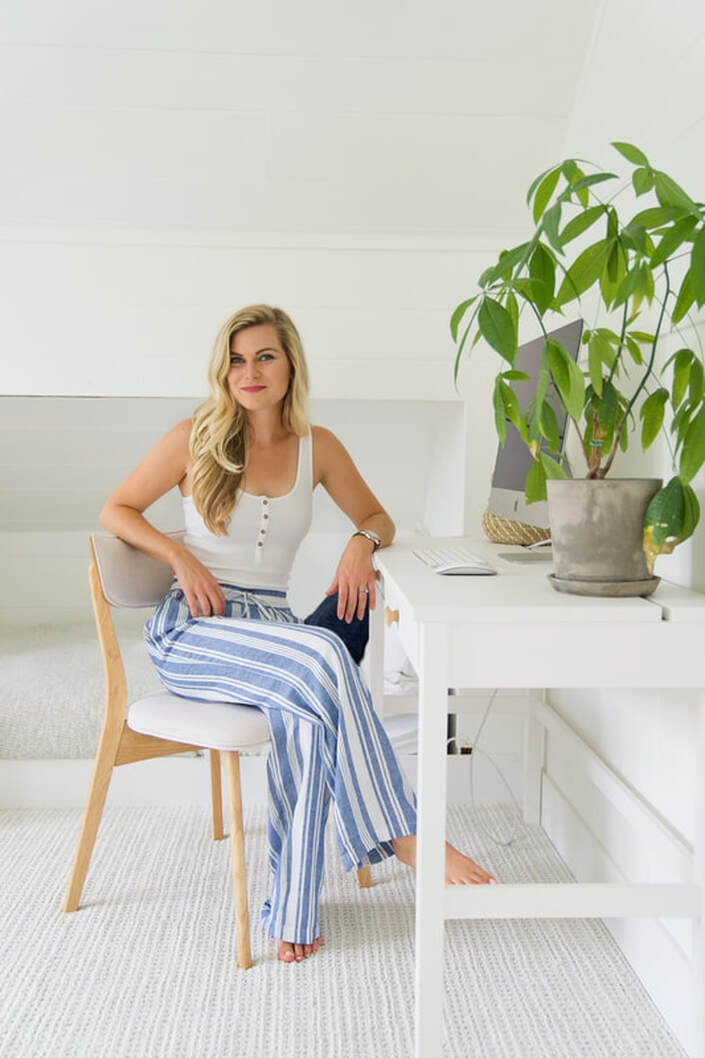Painting Knotty Pine Paneling
Painting the bunk room paneling was the most tedious, excruciating paint project I have ever embarked upon. We had gotten a quote to get is professionally sprayed for around $2,000. Looking back, it had probably been worth it! Because this paint project began back in Feb/March, I figured it was good a time as ever to tackle a DIY project. Save $2,000 and keep busy during the covid lockdown? Why not?
Older, wiser Hannah can think of many reasons "why not"
If you have paneling in your home that needs paint, I don't intend to scare you away tackling it! YOU CAN DO IT! I'm merely here to commiserate with you, and maybe offer some tips! In the end, painting the paneling was totally worth it. I love the look of painted paneling up here, and would prefer it to drywall - much more character!
Now, not all paneling is created equal. Some paneling is easier to paint than others, it depends on the species and the top layer (ie. the stain and/or finish). Ours is knotty pine, which is one of the worst. I did an abundance of research before getting started. You can find all kinds of conflicting information in regards to sanding verses not, latex versus oil, etc. I'm sharing what worked for us!
SUPPLIES:
Oil based primer (I recommend KILZ low odor)
Mask (to wear when using oil based primer)
Latex Paint (I recommend matte sheen to help minimize the appearance/texture of the grain)
Rollers (I used 3/8")
Cheap Paint brushes for priming (I used really cheap brushes when priming and threw them away after one use. Oil based primer is tough to clean!)
Quality Paint Brush
Paint Tray (I use disposable trays and throw them out after each use. Can you tell I hate cleaning paint supplies?)
White Painter's Caulk (we used this)
——- Catalog ———
Here is the 7 step process we used!
1. CLEAN
I began by cleaning and vacuuming the entire space, then wiping down with an old towel. As I have mentioned, two German Shepherds lived up here. I don't think the previous owners EVER cleaned this space. There was dog hair E-V-E-R-Y-W-H-E-R-E! Every single knot and groove was filled with hair, as was the bunks and dresser drawers. Fun.
2. TRIM WITH PRIMER
Once the paneling was clean, I began priming with an OIL BASED primer. Oil based primers do an excellent job of covering stains, knots, and grain. The negative? Oil based primer is POTENT. Often, after a day of painting, I would feel slightly light headed. It's likely that I lost a few brain cells throughout this process...ha! I did wear a heavy duty mask (yes, I was masking up before it was cool). I used a paint brush to trim the edges as well as the knots (as I had read that knots would bleed through otherwise).
3. ROLL PRIMER
Next, I rolled the entire room with the oil based primer.
Note: I switched to KILZ low oder oil based primer half way through. The low odor was much more bearable.
4. FIRST COAT OF LATEX PAINT
We used Behr Marquis matte in Chantilly Lace by Benjamin Moore. When selecting a sheen, it is important to understand the trade-off between glossy and matte paints. Glossy paint is easier to clean, while matte paint covers more wall imperfections. We selected matte for this space in order to minimize the appearance of knots of grain. We are very happy with this choice!
5. CAULK
If you have been following along on instagram, you know that we went through 32 TUBES OF CAULK! Yes, seriously. I realized after one coat of latex paint that the grooves were still dark (the photo above shows the paneling with one coat of primer and one coat of paint, no caulk). We caulked every. single. one. This took days.
6. SECOND COAT OF LATEX PAINT
After caulking, we applied another coat of latex paint. Again, I trimmed all of the grooves by hand.
7. THIRD COAT OF LATEX PAINT
It took three coats, and then touch up.
Note: You may notice that we did not do any sanding. While researching, I did read that many people opt to sand before painting and between coats. I decided to give it a go without sanding as our paneling did not appear to have a clear glossy finish. Also, I really didn't want to add another step, ha! Thankfully, it seems as though this step was not necessary for our space.
There you have it! The white paint makes the space look fresh and clean, while the rustic texture keeps it feeling cottage-like. As you can see (in the photo above where the light meets the ceiling), some of knots still show through. I love the character that those subtle knots provide!
See this post for sources to everything in the bunk room!
-HJJ











